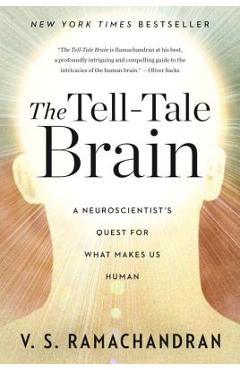Phantoms in the Brain - V. S. Ramachandran

Detalii Phantoms in the Brain -
libris.ro
105.97 Lei
117.74 Lei
Psychology
V.S. Ramachandran
Phantoms in the Brain - - Disponibil la libris.ro
Pe YEO găsești Phantoms in the Brain - de la V.S. Ramachandran, în categoria Psychology.
Indiferent de nevoile tale, Phantoms in the Brain - V. S. Ramachandran din categoria Psychology îți poate aduce un echilibru perfect între calitate și preț, cu avantaje practice și moderne.
Preț: 105.97 Lei
Caracteristicile produsului Phantoms in the Brain -
- Brand: V.S. Ramachandran
- Categoria: Psychology
- Magazin: libris.ro
- Ultima actualizare: 28-10-2025 01:22:05
Comandă Phantoms in the Brain - Online, Simplu și Rapid
Prin intermediul platformei YEO, poți comanda Phantoms in the Brain - de la libris.ro rapid și în siguranță. Bucură-te de o experiență de cumpărături online optimizată și descoperă cele mai bune oferte actualizate constant.
Descriere magazin:
A brilliant Sherlock Holmes of neuroscience reveals the strangest cases he has solved, uncovering bold insights into deep and quirky questions of human nature few scientists have dared to address. 25 line illustrations. Neuroscientist V.S. Ramachandran is internationally renowned for uncovering answers to the deep and quirky questions of human nature that few scientists have dared to address. His bold insights about the brain are matched only by the stunning simplicity of his experiments -- using such low-tech tools as cotton swabs, glasses of water and dime-store mirrors. In Phantoms in the Brain, Dr. Ramachandran recounts how his work with patients who have bizarre neurological disorders has shed new light on the deep architecture of the brain, and what these findings tell us about who we are, how we construct our body image, why we laugh or become depressed, why we may believe in God, how we make decisions, deceive ourselves and dream, perhaps even why we\'re so clever at philosophy, music and art. Some of his most notable cases: A woman paralyzed on the left side of her body who believes she is lifting a tray of drinks with both hands offers a unique opportunity to test Freud\'s theory of denial. A man who insists he is talking with God challenges us to ask: Could we be wired for religious experience? A woman who hallucinates cartoon characters illustrates how, in a sense, we are all hallucinating, all the time. Dr. Ramachandran\'s inspired medical detective work pushes the boundaries of medicine\'s last great frontier -- the human mind -- yielding new and provocative insights into the big questions about consciousness and the self.

Produse asemănătoare

Lost in the Fifties. Recovering Phantom Hollywood, Paperback/Wheeler Winston Dixon
![]() elefant.ro
elefant.ro
Actualizat in 28/10/2025
216.99 Lei

Phantom of the Opera - Souvenir Edition: Piano/Vocal Selections (Melody in the Piano Part), Paperback/Andrew Lloyd Webber
![]() elefant.ro
elefant.ro
Actualizat in 28/10/2025
173.99 Lei

Fast Jets on the Front Line. Flying Phatoms, Javelins and Tornados in the Cold War, Hardback/Alan Munro
![]() elefant.ro
elefant.ro
Actualizat in 27/10/2025
180.99 Lei
Produse marca V.S. Ramachandran

A Brief Tour of Human Consciousness: From Impostor Poodles to Purple Numbers - V. S. Ramachandran
![]() libris.ro
libris.ro
Actualizat in 28/10/2025
142.85 Lei

The Tell-Tale Brain: A Neuroscientist\'s Quest for What Makes Us Human - V. S. Ramachandran
![]() libris.ro
libris.ro
Actualizat in 28/10/2025
100.16 Lei



